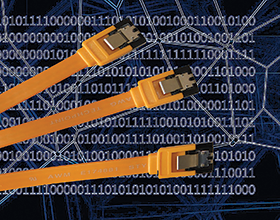

The twentieth century brought a host of new technologies and improvements to the world, with one of the biggest being the introduction of electronic computing.
In 1971, the world saw the first microcontroller introduced. While these did not have the computing power of a full computer, microcontrollers could add logical decision making and control, along with an interface to the physical world in the form of digital input/outputs. This allowed the introduction of a host of electronic devices which truly changed the world.
Originally, however, the development of devices which included microcontrollers and custom printed circuit boards (PCBs) required very specialised and expensive hardware, and was generally done on a large scale, with a very expensive and prohibitive development cycle. When PCBs had to be designed by hand over the course of days, a single mistake in the design, or change in the logic could be hugely costly.
On the manufacturing side, having to retool production line machines to cater for changes in design or manufacture is costly in terms of both cash and manpower. This also meant that manufacturing PCBs and electronics was mostly only profitable if done on a large scale. Mistakes in a large-scale production run could lead to thousands of unusable components, and with the difficulty of reclaiming individual elements from a finished PCB, much of this would go to waste having no recycle value or potential.
However, the twenty-first century has started to change this approach. With the introduction of affordable platforms like Arduino and Raspberry Pi, along with the slew of similar competitive products, the ability to put together custom electronic devices has become much more accessible to smaller companies, and even the private user. With the open nature of these platforms, potential developers can start learning the systems easily, and do not need a massive capital output to do so. This has also led to much more interest from electronic component manufacturers in catering to this market, which ultimately means that acquiring individual or small-quantity components is very possible for smaller operations.
Along with this, the introduction of commercially available 3D printing platforms has also allowed for a much more cost-effective approach to creating enclosures and assorted accessories for testing and production, once again allowing development to be done on a small scale. This too has led to CAD software companies offering smaller-scale versions of their platforms, often for fully open use, although with limited functionality compared to their full packages.
Together with all these changes to the manufacturing side of custom solutions, the introduction and global acceptance of the internet has led to a world where we can share and have access to a global pool of knowledge. This means that testing and development of components and solutions can often lean on a large community interested in open sharing of information. A developer does not need as much testing equipment or personnel when a lot of this information is available in forums. This has also provided access to online sharing platforms like Udemy and Skillshare, where technical skills can be learnt without having to pay for years of formal education. While not providing full technical expertise, these courses can be more than enough for small-scale understanding for initial small-scale testing and development.
These initial prototypes can then be taken further by slowly introducing changes, again on an adaptable level. The investor does not necessarily need to invest thousands or millions from the beginning to motivate the entire project. Prototype phases can be done step by step, with much less risk or loss if the project does fail at a certain phase. This provides a much higher level of investor confidence, as risk can be managed over shorter time periods, with smaller risk amounts.
Altogether, this is leading to a world where the development and prototyping of custom solutions is much more accessible, and this in turn is leading to innovation, especially in the commercial markets. Putting an idea for a new solution or device into development phases is now much more affordable, and can be done in a much more agile manner. Initial investors can find companies that will be able to put together basic prototypes of their ideas, and these prototypes can be used to both test the proof of concept, and gain further investment into the idea. Being able to approach potential large-scale investors with a physical prototype that shows the basic operation of an idea provides a much stronger base on which to sell the idea for further development, or even large-scale manufacture.

© Technews Publishing (Pty) Ltd | All Rights Reserved